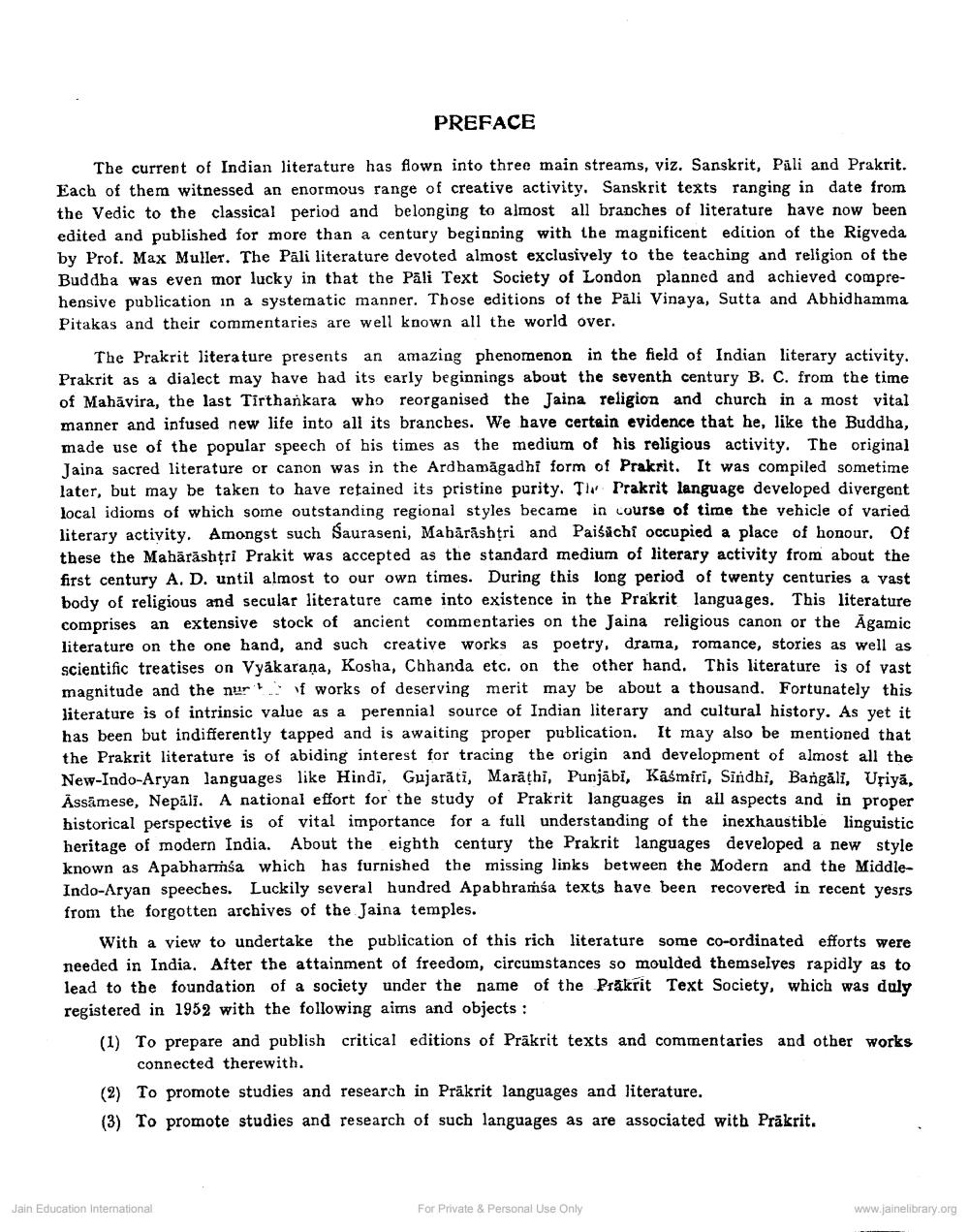________________
PREFACE
The current of Indian literature has flown into three main streams, viz. Sanskrit, Pali and Prakrit. Each of them witnessed an enormous range of creative activity. Sanskrit texts ranging in date from the Vedic to the classical period and belonging to almost all branches of literature have now been edited and published for more than a century beginning with the magpificent edition of the Rigveda by Prof. Max Muller. The Pali literature devoted almost exclusively to the teaching and religion of the Buddha was even mor lucky in that the Pali Text Society of London planned and achieved comprehensive publication in a systematic manner. Those editions of the Pāli Vinaya, Sutta and Abhidhamma Pitakas and their commentaries are well known all the world over.
The Prakrit literature presents an amazing phenomenon in the field of Indian literary activity. Prakrit as a dialect may have had its early beginnings about the seventh century B. C. from the time of Mahāvira, the last Tirthankara who reorganised the Jaina religion and church in a most vital manner and infused new life into all its branches. We have certain evidence that he, like the Buddha, made use of the popular speech of his times as the medium of his religious activity. The original Jaina sacred literature or canon was in the Ardhamăgadhi form of Prakrit. It was compiled sometime later, but may be taken to have retained its pristine purity. TW Prakrit language developed divergent local idioms of which some outstanding regional styles became in course of time the vehicle of varied literary activity. Amongst such Sauraseni, Mabärāshtri and Paisachi occupied a place of honour. Of these the Mahārāshțri Prakit was accepted as the standard medium of literary activity from about the first century A. D. until almost to our own times. During this long period of twenty centuries a vast body of religious and secular literature came into existence in the Prakrit languages. This literature comprises an extensive stock of ancient commentaries on the Jaina religious canon or the Āgamic literature on the one hand, and such creative works as poetry, drama, romance, stories as well as scientific treatises on Vyakarana, Kosha, Chhanda etc. on the other hand. This literature is of vast magnitude and the nur l yf works of deserving merit may be about a thousand. Fortunately this literature is of intrinsic value as a perennial source of Indian literary and cultural history. As yet it has been but indifferently tapped and is awaiting proper publication. It may also be mentioned that the Prakrit literature is of abiding interest for tracing the origin and development of almost all the New-Indo-Aryan languages like Hindi, Gujarăti, Marathi, Punjābi, Kasmiri, Sindhi, Bangăli, Upiya, Assamese, Nepāli. A national effort for the study of Prakrit languages in all aspects and in proper historical perspective is of vital importance for a full understanding of the inexhaustible linguistic heritage of modern India. About the eighth century the Prakrit languages developed a new style known as Apabharma which has furnished the missing links between the Modern and the MiddleIndo-Aryan speeches. Luckily several hundred Apabhramsa texts have been recovered in recent yesrs from the forgotten archives of the Jaina temples.
With a view to undertake the publication of this rich literature some co-ordinated efforts were needed in India. After the attainment of freedom, circumstances so moulded themselves rapidly as to lead to the foundation of a society under the name of the Prakrit Text Society, which was duly registered in 1952 with the following aims and objects : (1) To prepare and publish critical editions of Prākrit texts and commentaries and other works
connected therewith. (2) To promote studies and research in Prākrit languages and literature. (3) To promote studies and research of such languages as are associated with Prākrit.
Jain Education International
For Private & Personal Use Only
www.jainelibrary.org




